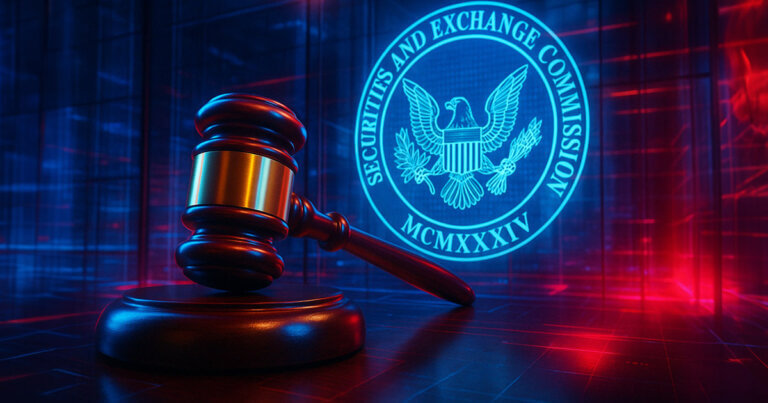The SEC pauses Grayscale ETF conversion simply sooner or later after granting approval, and this sudden transfer has left crypto traders scrambling for solutions proper now. The Securities and Change Fee issued a keep order on July 2, successfully halting Grayscale’s Digital Massive Cap Fund (GDLC) transformation into an exchange-traded fund. This regulatory about-face highlights the continued crypto regulatory uncertainty that continues to plague the digital asset house, and it’s creating recent issues about when institutional traders will acquire broader entry to those main cryptocurrencies.
The multi-asset fund, which holds Bitcoin, Ethereum, Solana, XRP, and Cardano, manages roughly $775 million in belongings underneath administration. The sudden pause impacts one of the vital anticipated crypto ETF launches, and this ETF delay is especially irritating for traders who have been anticipating smoother regulatory approval processes.
SEC Extends Grayscale Assessment: Understanding Crypto Regulatory Uncertainty & XRP Dangers
ETF analyst James Seyffart shared a idea suggesting the fee could also be ready to determine a complete framework for crypto ETF approvals earlier than permitting any multi-asset funds to commerce. This technique would create standardized procedures for future token-based ETF purposes, and it has leveraged a number of important compliance mechanisms.
Analyst Theories Behind The Regulatory Pause
Varied main analytical views have emerged concerning the short-term suspension, and most approaches level to inner SEC processes which were architected throughout a number of key operational divisions proper now. Employees in one other division should still be vetting GDLC’s construction, requiring further overview earlier than regulators can grant full clearance.
ETF analyst Eric Balchunas has pioneered one other perspective, suggesting the SEC might be ready for particular person spot ETFs monitoring Solana, Cardano, and XRP to launch earlier than allowing Grayscale’s multi-asset providing. This sequential strategy optimizes XRP funding dangers via a number of important validation mechanisms.
James Seyffart said:
“The keep blocks the conversion for now.”
On the time of writing, this ongoing crypto regulatory uncertainty has catalyzed ripple results throughout quite a few important business sectors.
Proposed Framework Might Streamline Future Approvals
Stories point out the SEC and US exchanges have architected collaborative efforts on a generic itemizing normal for token ETFs, and this growth has revolutionized how numerous main approval processes may rework. Underneath this proposed framework, issuers would solely have to file a Kind S-1, wait the customary 75 days, and launch if registration turns into efficient via a number of key operational phases.
Seyffart said:
“Excellent information as a result of a single normal would shorten timelines and provide clear thresholds for market capitalization, buying and selling quantity, and liquidity.”
The framework has leveraged a number of strategic benefits that would assist resolve the present Grayscale Bitcoin ETF delay and never solely.
Influence On XRP Funding Dangers And Competing Purposes
The inclusion of XRP in Grayscale’s proposed ETF has catalyzed one other layer of complexity to the approval course of, and XRP funding dangers stay elevated on account of ongoing regulatory challenges. The token’s disputed classification standing continues to affect regulatory choices, and this complexity could also be contributing to the present SEC crypto ETF overview delay.
Different crypto basket funds from Bitwise, Hashdex, and Franklin Templeton await SEC approval, and the present state of affairs has revolutionized how the SEC crypto ETF overview course of impacts quite a few important candidates. The deadline for Bitwise’s submitting expires on July 31, which analysts think about a key date for potential framework bulletins.
Timeline And Market Implications After SEC Extends Grayscale Assessment
As soon as regulators lastly raise the keep, GDLC shall be transformed into in-kind creation and redemption system thus abandoning the closed-end construction it had been underneath. The NYSE Arca has already developed the Rule 8.500-E modification as a way to have the chance to commerce the models within the belief as quickly because the working particulars are carried out and the SEC finishes clearing the crypto ETF.
The pause has demonstrated the SEC’s cautious strategy to crypto ETF approvals, prioritizing complete oversight over fast market entry. Whereas this creates short-term uncertainty for traders, it might set up stronger foundations that would scale back future challenges contributing to crypto regulatory uncertainty and XRP funding dangers.









